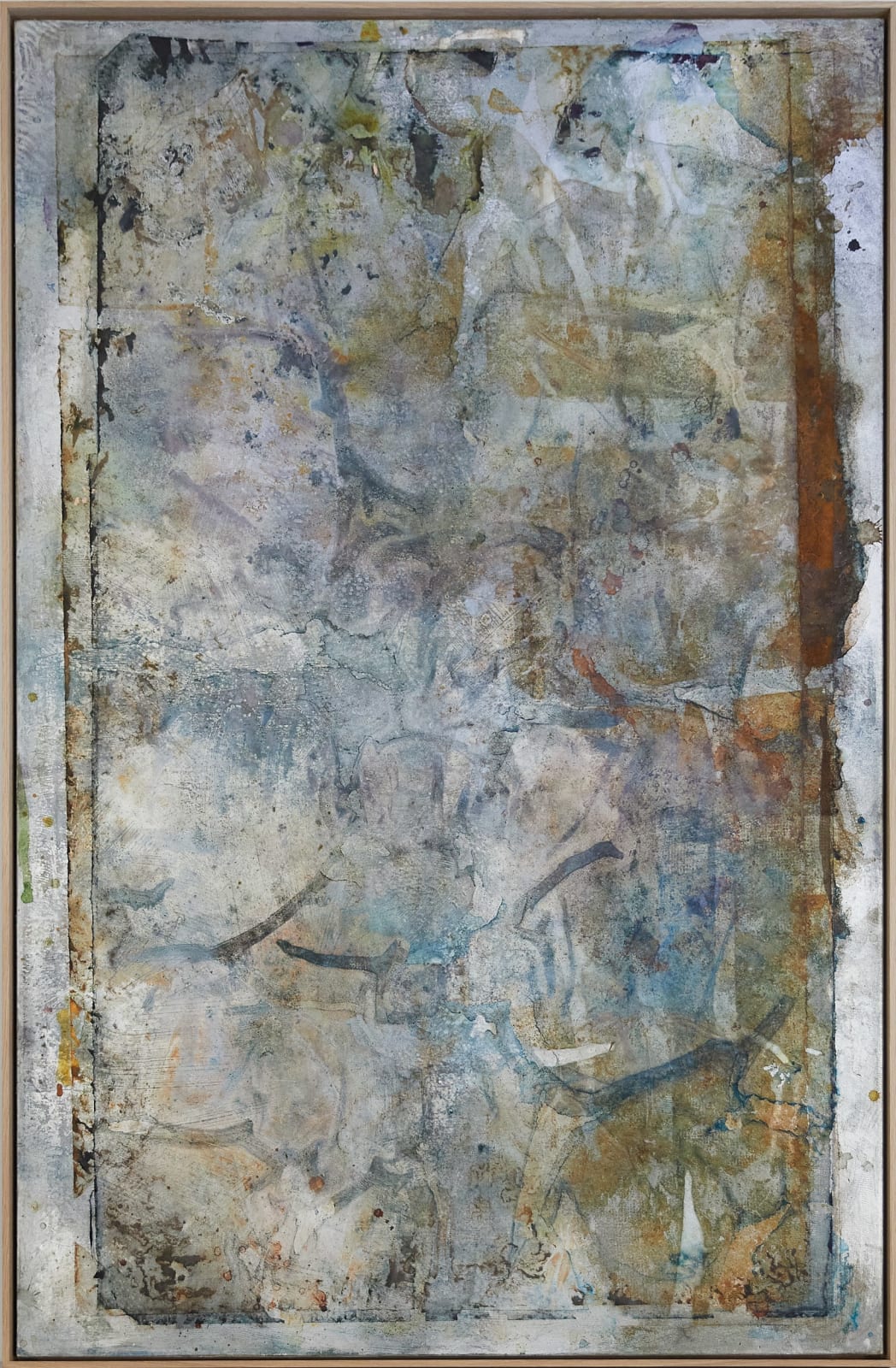
Purdey Fitzherbert (b.1987)
Sublimate III, 2019
Pigment, iron fillings, ink, dyes on canvas
185.5 x 120 cm
73 1/8 x 47 1/4 in
73 1/8 x 47 1/4 in
£ 14,000.00
Purdey Fitzherbert followed her foundational studies at Wimbledon College of art with an Honours Fine Art degree from Newcastle University, where she also worked with senior Psychology lecturer Dr. Gabriele...
Purdey Fitzherbert followed her foundational studies at Wimbledon College of art with an
Honours Fine Art degree from Newcastle University, where she also worked with senior
Psychology lecturer Dr. Gabriele Jordan to enhance her knowledge on human experience of
colour. She has been influenced by the materiality of Anselm Kiefer, the minimalism of Agnes
Martin and the subtlety of Robert Irwin. Having been praised internationally for her work, she
is looking to further engage with viewer experience in her future explorations.
Purdey Fitzherbert’s works are a unique blend of classical Western training, noble upbringing,
and Japanese aesthetical values. She has long suffered from chronic insomnia, and her first
artistic inspirations came from snippets of experiences of her unconscious wanders. After she
embraced the art of meditation and the world of natural medicine, her world reilluminated and
her artistic path became fully entwined with her path of healing. That was the time when the
light and colour took the centre stage of her artistic explorations. In the Sublimate series,
created in 2019, instead of capturing the appearance of light, Purdey tries to convey its
ephemeral nature through the fleeting experiences of human eye.
For Purdey the process of creation is paramount. She
stresses the importance and the innate beauty of traditional crafts techniques. The artist embraces
the full journey in her works, starting with hand ground pigments all the way to relinquishing her
dominant role as a maker and trusting the natural processes to carry through her artistic vision and
to release the creative force behind it. Purdey herself views it as a process of ‘discovery and
mystery, some of which will always be unknown’. The courage of letting the beauty be revealed
‘from within the darkness of matter’ without interventions and impositions is the vital aspect of
Purdey’s nature as an artist.
- text by Bella Kesoyan
Honours Fine Art degree from Newcastle University, where she also worked with senior
Psychology lecturer Dr. Gabriele Jordan to enhance her knowledge on human experience of
colour. She has been influenced by the materiality of Anselm Kiefer, the minimalism of Agnes
Martin and the subtlety of Robert Irwin. Having been praised internationally for her work, she
is looking to further engage with viewer experience in her future explorations.
Purdey Fitzherbert’s works are a unique blend of classical Western training, noble upbringing,
and Japanese aesthetical values. She has long suffered from chronic insomnia, and her first
artistic inspirations came from snippets of experiences of her unconscious wanders. After she
embraced the art of meditation and the world of natural medicine, her world reilluminated and
her artistic path became fully entwined with her path of healing. That was the time when the
light and colour took the centre stage of her artistic explorations. In the Sublimate series,
created in 2019, instead of capturing the appearance of light, Purdey tries to convey its
ephemeral nature through the fleeting experiences of human eye.
For Purdey the process of creation is paramount. She
stresses the importance and the innate beauty of traditional crafts techniques. The artist embraces
the full journey in her works, starting with hand ground pigments all the way to relinquishing her
dominant role as a maker and trusting the natural processes to carry through her artistic vision and
to release the creative force behind it. Purdey herself views it as a process of ‘discovery and
mystery, some of which will always be unknown’. The courage of letting the beauty be revealed
‘from within the darkness of matter’ without interventions and impositions is the vital aspect of
Purdey’s nature as an artist.
- text by Bella Kesoyan